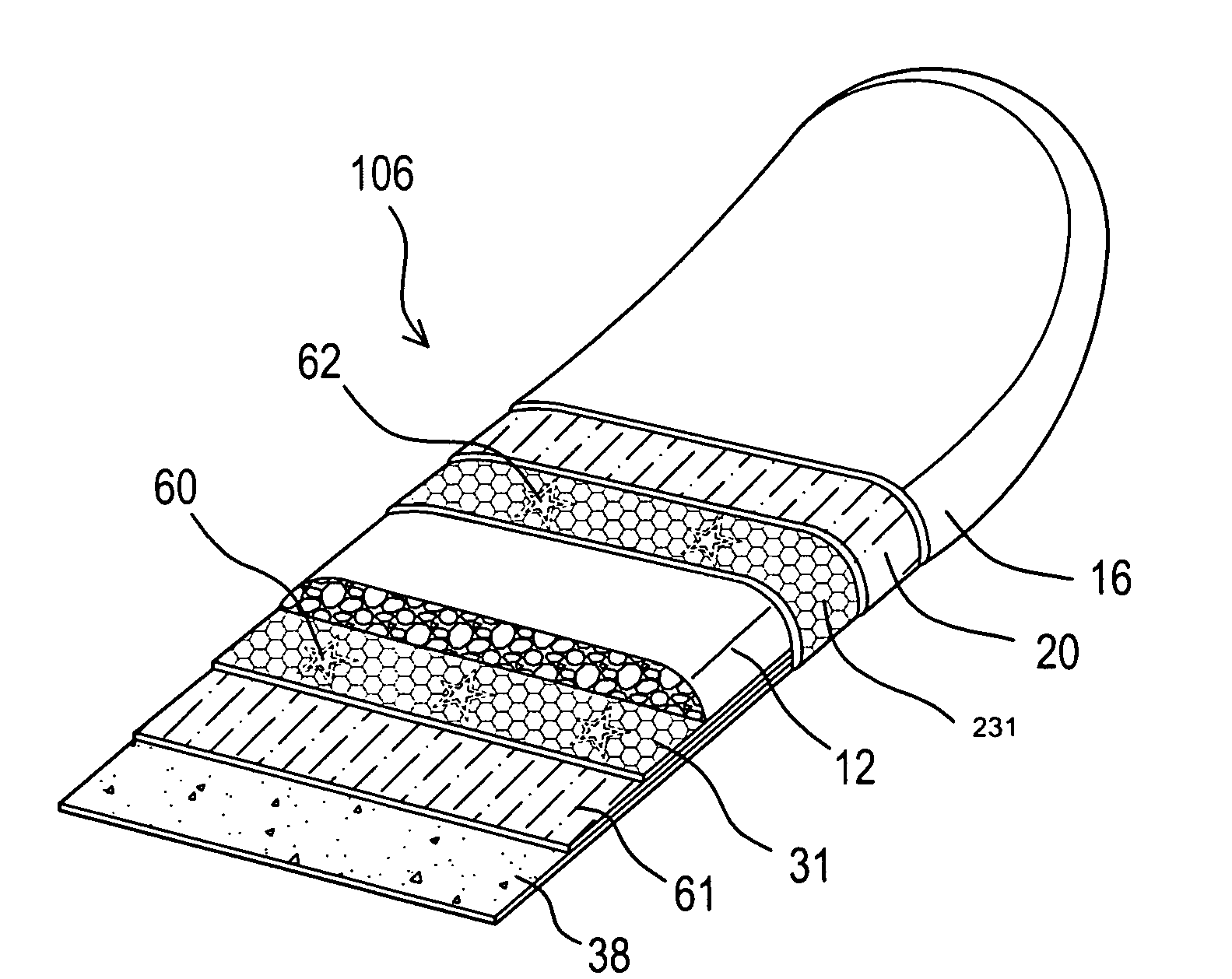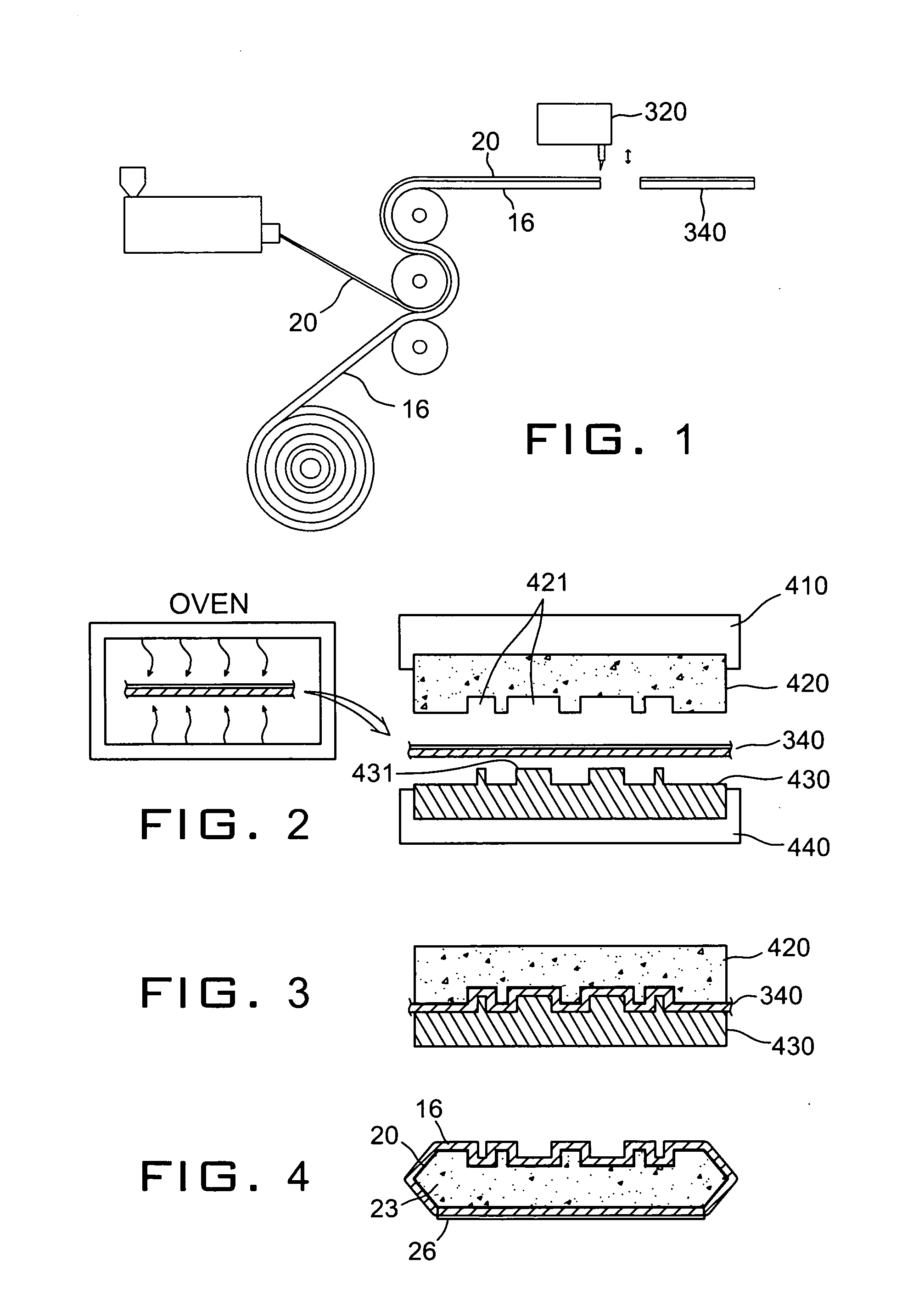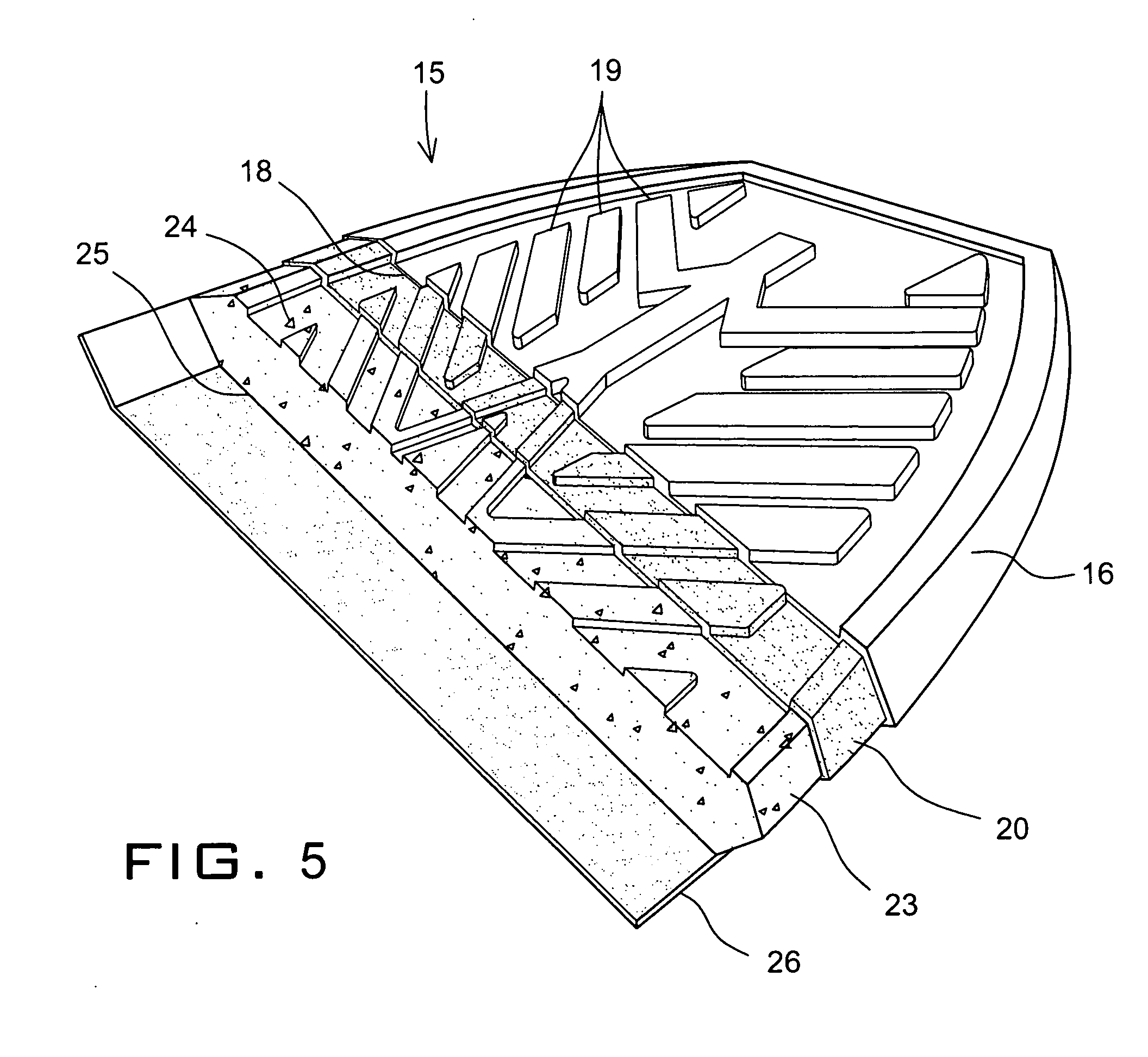Thermoformed sports board
a sports board and foam core technology, applied in the field of foam sports boards, can solve the problems of limited adhesion contact between the film and the foam core, prone to delamination, and unmodified low density polyethylene thin layer with limited efficacy, etc., to achieve enhanced bond strength and flexibility, less cost, and more efficient
- Summary
- Abstract
- Description
- Claims
- Application Information
AI Technical Summary
Benefits of technology
Problems solved by technology
Method used
Image
Examples
third embodiment
[0040]As a third embodiment method, the foam core may also be formed by a thermoforming process inside a mold. The foam core is preferably a low density plastic foam made of thermoplastic materials such as polyethylene, polypropylene, and ethylene vinyl acetate copolymer. The foam core is not pre-formed. Instead a primary foam board is shaped from a foam plank to a rough dimension close to the desirable shape of the foam core. The top and bottom foam skins are preheated in an oven. The primary foam board is similarly preheated in an oven to bring the foam material to a thermo-formable temperature. All three elements are put inside a mold and pressure is applied to compress the three layers. Additional heating may also be applied to the foam core, top foam skin and bottom foam skin. The mold may be heated and hot steam may be injected into the mold cavity to maintain the desirable temperature for thermoforming. The low density foam core will be compressed to conform the shape of the ...
first embodiment
[0041]FIG. 5 shows a cross-section of the present invention which shows the improved bodyboard, which is generally indicated as the improved sports board 15. As shown in FIGS. 1-2, bodyboard 15 is comprised of four layers laminated and thermoformed together. Top layer 16 is polyethylene foam. Top layer 16 has a thickness of between 2 mm to 8 mm, and preferably a thickness of 4.5 mm. Top layer 16 has a density in the range of 4 to 10 lbs / ft3, and preferably a density of 7 lbs / ft3.
[0042]Adhesive layer 20 is an ethylene and methyl acrylic copolymer. Adhesive layer 20 has a thickness of between 0.02 and 0.15 mm, and preferably a thickness of 0.07 mm. Adhesive layer 20 has a density in the range of 0.09 to 0.98 g / cm3, and preferably a density of 0.95 g / cm3. The ethylene methyl acrylate copolymer EMAC (TM) that can be obtained at Eastman Chemical Company of 100 North Eastman Road, Kingsport, Tenn. 37662 may be employed in the preferred embodiment of the present invention. Generally hot me...
second embodiment
[0049]In a second embodiment, the graphic layer is adhered to the top foam sheet 231 or adhered to the bottom foam sheet 31 as a separated layer. The bottom surface of the polyethylene top foam sheet is bonded to the foam core 12. The combined thickness of the plastic film layer 16 and adhesive resin film layer 20 is generally in the range of 0.01 mm to 0.15 mm. The plastic film layer 16 is preferably transparent and includes graphic images printed on the inner surface facing the top adhesive resin film layer 20. Similarly the plastic film layer 38 may include graphic images printed on the inner surface facing the bottom adhesive resin film layer 61. Alternatively, the graphic images can be formed on an outer surface of the plastic film layer 16 facing away from the core 12.
[0050]The graphic images can be visible outside the plastic film. The graphic imprinted plastic film layer 16, 38 preferably has the same polymer composition as the foam sheet. The graphic imprinted plastic film ...
PUM
| Property | Measurement | Unit |
|---|---|---|
| thickness | aaaaa | aaaaa |
| thickness | aaaaa | aaaaa |
| thickness | aaaaa | aaaaa |
Abstract
Description
Claims
Application Information
 Login to View More
Login to View More - R&D
- Intellectual Property
- Life Sciences
- Materials
- Tech Scout
- Unparalleled Data Quality
- Higher Quality Content
- 60% Fewer Hallucinations
Browse by: Latest US Patents, China's latest patents, Technical Efficacy Thesaurus, Application Domain, Technology Topic, Popular Technical Reports.
© 2025 PatSnap. All rights reserved.Legal|Privacy policy|Modern Slavery Act Transparency Statement|Sitemap|About US| Contact US: help@patsnap.com



